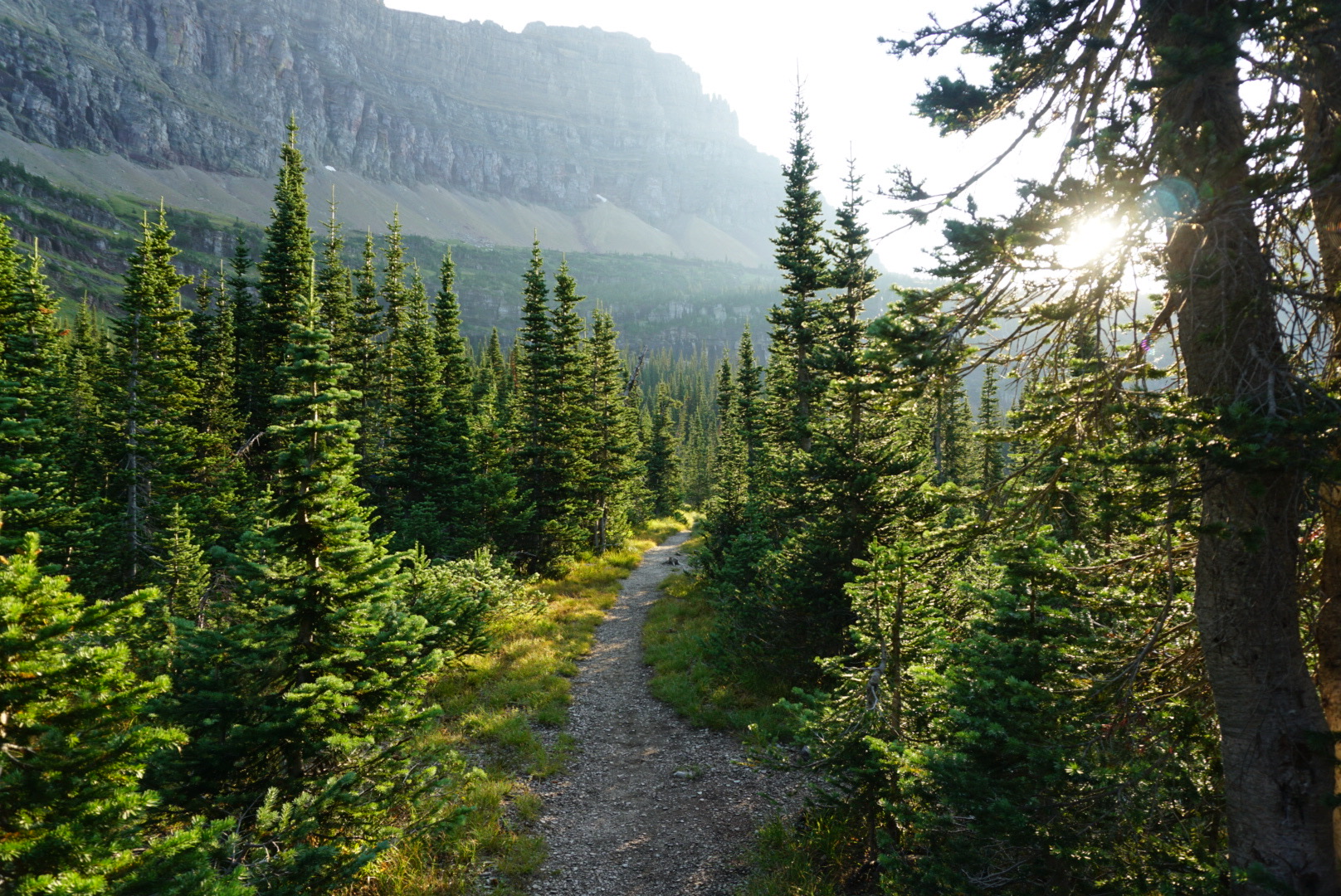The importance of trees
The definition of deforestation is clearing a wide area of trees without replanting them. I really like trees – hiking through a quiet forest, or seeing the beautiful fall leaves are two of my favorite things. Not only do I like trees, but they are important to humans and the earth. Their photosynthesis process takes carbon dioxide and turns it into oxygen. So they take our “waste” from our breath and other processes, and turn it into what we need to live. Thinking about deforestation is a little scary. It’s taking away some of the earth’s beauty, but it’s also taking away a portion of living things that help us survive on the earth.

The magnitude of deforestation
Deforestation is a big topic, and maybe you’re not convinced of its importance or not sure what we could possibly do about it. Let’s unpack the details of what it is, why it matters, and how it happens. While you and I may not be directly cutting down trees, humans are a big contributing factor to today’s deforestation rates. We will also walk through some ways we can prevent deforestation later on.
I think it’s important to understand the magnitude of the topic at hand, so let’s start with some deforestation facts.
- Approximately 30% of the world’s land is covered with forests.
- Approximately 80% of the world’s land animals and plants live in forests.
- Approximately ⅔ of the world’s biodiversity is supported by tropical forests specifically.
- Between 2001 and 2020, the equivalent of France, Germany, and Spain (if they were completely covered with forest) were destroyed due to deforestation.
- In 2022 alone, we lost 4.1 million hectares of tropical forest. This is equivalent to approximately 11 football fields per minute.
- Approximately ⅔ of deforestation happens in the tropics. In fact, if tropical deforestation were its own country, it would be third highest in emissions of carbon dioxide (behind the United States and China).
Forest types and definitions
There are three main types of forest globally – tropical, temperate, and boreal. The types of forest are highly dependent on where they are located globally. Tropical forests are located closest to the equator, are very warm areas, and have two seasons: rainy and dry. Boreal forests are furthest from the equator and are generally the weather is cold and wet. Temperate forests are located in the “middle” geographically and seasonally. They experience the greatest variety of weather patterns including both warm and cold weather.
There is another important distinction to make about forests. When forests are referred to as “primary”, it means they have never previously been cleared. This means trees in primary forests are often hundreds of years old. It’s hard to predict all the impacts that would occur if deforestation continues to occur in primary forests considering these trees have been around for so much longer than most technology!
Deforestation impacts: biodiversity loss
We’ve seen some high level reasoning for why forests are important, but why does deforestation really matter? What are the impacts and consequences of removing forest? One reason is biodiversity loss. Tropical forests support at least two-thirds of the known species (plants and animals) on earth. As more and more forest is cleared through deforestation, there are two ways that biodiversity is impacted:
- As trees are removed, plants and animals are more exposed to the elements. In many tropical areas, the trees (or “canopy”) are essential to maintaining the temperature and humidity of the area to support plants and animals. Without this canopy, both plants and animals can be harmed.
- As trees are completely cleared, often the forest floor housing other plants and animals are also cleared and destroyed. If animals survive the initial clearing, they may not be able to survive in a new area. In fact, many unique species on the earth exist in a very small, localized area. If this area is destroyed, a species may go extinct, or be more available for poachers and hunters. As an example, deforestation has caused 16% of species in the Southeast Asia mangroves to be at a high risk for extinction.
There have been multiple simulations to attempt to estimate the biodiversity impact due to deforestation. The truth is, it’s extremely hard to model because none of us can predict exactly what will happen. Maybe some species can adapt and live outside their original environment, but others can’t. The simulation results are dependent on the inputs and assumptions, including different types of animals, their ability to survive outside their typical habitat, and what will happen to the land after deforestation occurs. The definition of a mass extinction event is > 75% biodiversity loss. Some simulations indicate we will have another mass extinction event in the next few hundred years with the current rate of deforestation.
Deforestation impacts: carbon emissions and climate change
The second impact of deforestation is around carbon emissions and climate change. Climate change causes an increased frequency and severity of extreme weather events like hurricanes and tornadoes. It’s important to address and mitigate climate change where possible. One way to manage this is by reducing carbon dioxide emissions.
Plants use a photosynthesis process that converts carbon dioxide to oxygen. This is great, because that’s the opposite of people – we inhale oxygen and exhale carbon dioxide. Humans also emit carbon dioxide through other processes like manufacturing and driving cars, which contributes to global warming and climate change. Trees can absorb any carbon dioxide in the atmosphere. They could be a large part of our plans to mitigate climate change. At the very least, we shouldn’t be chopping down something that can help absorb carbon dioxide, the main greenhouse gas of concern. Cutting down trees emits more carbon into the atmosphere, and removes the potential for that tree to absorb future carbon dioxide. Deforestation contributes approximately 7-16% of total greenhouse gas emissions.
One study shows the location of deforestation matters when discussing net carbon emissions. Carbon dioxide emissions cause an overall warming effect on the Earth. However, there are other “biophysical effects” that happen when trees are cut down. These biophysical effects include how the sun reflects off the earth’s surface, how much cloud cover there is, and how water moves from plants to the atmosphere and vice versa. Many of these biophysical changes due to deforestation lead to an overall cooling effect on the Earth.
When scientists model these changes ~80 years into the future, we find some interesting results. In tropical forests, the carbon dioxide emissions (warming) outweigh the biophysical effects (cooling) for an overall net warming effect on the earth. However, in temperate and boreal forests, the biophysical effects (cooling) outweigh the carbon dioxide emissions (warming) for an overall net cooling effect on the earth. This study indicates that tropical deforestation will have the largest impact on climate change, whereas deforestation in other regions may end up cooling the earth due to biophysical effects. Does this mean we should clear temperate and boreal forests, and limit deforestation in tropical forests? If we were only concerned about climate change, then maybe. But we also need to consider biodiversity, water cycles, and indigenous livelihoods which would be severely negatively impacted by clearing boreal and temperate forests and would have other negative climate impacts.
Deforestation impacts: disruption of indigenous livelihoods
A third effect of deforestation is the removal of indigenous people’s homes and livelihoods if they rely on forests to survive. A study was completed to evaluate indigenous people living in the Chaco forest in South America (Brazil, Bolivia, Argentina, and Paraguay). The indigenous living in the Chaco are often poor and lack land titles; however, they are fully dependent on the resources within the surrounding forest for their survival. Deforestation in these areas often causes ecological marginalization. This term refers to the forest resources of indigenous people disappearing, or forcing indigenous people to move to a less optimal area with fewer resources.
In 1985, the Chaco forest maintained approximately 28,000 homesteads. In 2015, this number decreased to a little under 26,000 homesteads, or an 8% loss. It was determined that the highest number of homesteads existed in areas with the lowest deforestation rates. Areas with the highest deforestation rate also had the highest rate of homestead loss. In this region, the high deforestation rates were primarily due to clearing land for agricultural purposes. There is a possibility that deforestation for agricultural purposes is not the only reason for the changes in homesteads, but the trends shown in the study suggest that it is a major contributing factor.

Deforestation impacts: increase in infectious diseases
A fourth effect of deforestation is related to infectious diseases. “An estimated 60 percent of emerging infectious diseases come from animals, and a major cause of viruses’ jump from wildlife to humans is habitat loss, often through deforestation.” As deforestation continues, animals continue to lose their habitats. This causes animals to push into what was previously human territory. This appears to be particularly true for bats – “when bats struggle to find a suitable habitat, they travel closer to human communities.”
Deforestation impacts: water cycle disruption
Lastly, forests affect water cycles. Data demonstrates that deforestation actually increases the streamflow quantity of water. Trees also use water, so when there are less trees to consume water, the quantity of water in the streams (or other water bodies) increases. However, quantity of water is not the only thing we are concerned with as humans. We also care that the water is accessible and clean.
A study conducted in Malawi found that for every percentage point increase in deforestation, there is a subsequent decrease in access to clean drinking water by 0.93 percentage points. Without trees, soil erosion increases and water filtration decreases. Both of these effects decrease water quality through an increase in turbidity. Scientists think the Amazon rainforest influences not just regional, but global water cycles. The Amazon is incredibly important in the water supply for Brazil and other neighboring countries. No one fully understands the global effects, but they could certainly be far-reaching!
Deforestation causes: food and oil production
Now that we know some of the devastating effects of deforestation, let’s dive into some of the reasons why deforestation happens.
One of the leading causes of deforestation is to use the land for another purpose, primarily agriculture (including farming and livestock grazing), aquaculture (fish farming), as well as palm oil production. In this case, people view the land as more valuable if used for an alternative purpose than continuing to protect the forest. Farming and livestock ranches are primarily a concern in Central and South America. In fact, agricultural expansion accounts for approximately 90% of deforestation in Latin America. Much of the recent deforestation in the Amazon in Brazil is primarily due to agricultural beef production; however, soy plantations also have had a significant impact. It has also been observed that as agricultural prices have increased in Brazil, deforestation has also increased. 17% of the Amazon has been lost in the last 50 years due to agriculture, particularly cattle ranching.
Aquaculture, or fish farming, is a larger problem for mangrove deforestation in Southeast Asia. It accounts for at least 30% of mangrove deforestation in the area today (previously it was up to 54% in the 80s and 90s). Rice farming in Southeast Asia comes in second as it accounts for at least 22% of mangrove deforestation today.
Palm oil production is another major cause of deforestation in Southeast Asia. Similarly to agricultural price increases in Brazil driving deforestation, as global palm oil prices have increased, deforestation for palm oil plantations in Indonesia and Malaysia has also increased. Indonesia and Malaysia alone produce about 85% of palm oil globally. Today approximately 16% of deforestation in Southeast Asia is due to palm oil expansion.
Deforestation causes: population growth and urbanization
Global demand for agriculture products and palm oil continues to increase as the global population and global wealth increases. As the population increases, infrastructure and urbanization will increase as well. An increase in road density and other infrastructure (railroads, canals, dams, power lines, etc.) typically leads to an increase in deforestation as the forest is easier to access and use by humans. Looking at the Amazon in Brazil as an example, 95% of total deforestation happens within a 3.5 mile radius of a roadway.
Deforestation causes: valuable resource production
Mining, drilling, and logging are other human causes of deforestation. Forests can contain deposits of valuable materials like oil, natural gas, coal, gold, and other minerals. The process of mining and drilling for these valuable materials not only causes deforestation due to clearing of trees to mine and drill, but can negatively impact the environment in other ways. The process of mining and drilling can lead to soil erosion. Additionally, many mining processes require harmful chemicals that can lead to contamination of water and soil in the area. Logging processes ensure a supply of wood and paper products for the world. This includes wood for furniture building and wood for paper products like printer paper and toilet paper.
Deforestation causes: wildfires
A natural cause of deforestation is through wildfires. Humans can cause wildfires. If it’s a dry area and you’re having a campfire, it could take just one spark escaping to start a wildfire that burns hundreds or thousands of acres of forest. However, many wildfires start naturally by lightning strikes in dry areas. Wildfires are part of the natural growth process for forests. When forests become extremely dense, new growth is choked out due to limited sunlight making it to the forest floor. There is also a specific species of pine tree that can only release new seeds and multiply through experiencing a wildfire!
Wildfires are necessary to support growth; however, there are other negative impacts as well. Wildfires can affect water cycles, biodiversity, soil health, and destroy the livelihoods of those who live in or near the forest. This is why humans need to be cautious and prevent unnatural wildfires.

An indirect cause of deforestation: regulations and industry lobbying
While regulations and industry lobbying do not cut trees down directly, it certainly influences deforestation. Lobbying from industries that want to remove forests can influence governments to relax regulations or approve their specific deforestation efforts. Lobbying can also come from conservationists to promote forest conservation. The difference is that industries generally just need to lobby or bribe once to get their deforestation approval, whereas conservationists need to continuously lobby to prevent deforestation.
Typically deforestation increases during an election year, or during times of political instability. If the current government expects the upcoming election to favor the other party, they may not care as much about what happens to the land, or there may be an incentive to relax regulations in order to obtain a vote or endorsement. Some firms have also resorted to bribing local law enforcement to allow illegal deforestation. This is particularly true for smaller firms as they have less capital and are removing less forest than larger firms. Research into the Brazilian government’s environmental regulations demonstrates that stricter regulations do decrease deforestation activities.
Another factor is land ownership rights. When ownership rights to land are unclear or do not exist, this land is the most likely to be overexploited. This is referred to as the “tragedy of the commons” by Hardin (1968).
How can we help? Consumer product sourcing and reducing consumption
One of the best things we can do is to stop buying things we don’t need. Our materialistic society is ruining the planet. Particularly when it comes to wood, paper, and palm oil containing products, think about whether or not you really need to make the purchase. Can you go to a thrift store instead of buying something new? Can you use what you already have? What about borrowing something from a neighbor or friend?
If there is something you really need, then make sure to purchase consumer products with responsible sourcing and sustainable manufacturing. You can reference the below certifications when you’re purchasing to make the most sustainable decisions.
- The Forest Stewardship Council (FSC) is an organization that protects forests. The FSC has a certification system to indicate responsible sourcing. The certification means zero deforestation (they protect old growth forests, and no net loss occurs over time) and workers receive fair wages. Additionally, biodiversity is protected and local people living in the forest are protected and consulted.
- The Rainforest Alliance is another organization that dedicates funds for responsible land management and protecting forests. Their certification program indicates responsible sourcing for products and protects human rights.
- The World Wildlife Fund (WWF) also supports responsible land management. They have a palm oil scorecard that ranks consumer brands that use palm oil in their formulations. The Roundtable on Sustainable Palm Oil (RSPO) and Certified Sustainable Palm Oil (CSPO) are two labels indicating sustainable sourcing. Their 2021 report includes 227 companies and how they rank in terms of sustainable sourcing in their use of palm oil.
- Purchase locally grown food and animal products! When you know you’re purchasing beef from a farm in your city or state, you know exactly where it came from. You can learn about their farming practices, how long they’ve been in operation, etc.

Supporting these organizations that are doing the work to develop and maintain certifications is another way we can help prevent deforestation. This could be through monetary donations, or through sharing the available information with others. WWF particularly influences infrastructure financing and construction to ensure proper maintenance of forests.
How can we help? Support conservation regulations and programs
The United Nations has developed a program that the World Bank supports that has had some success. It’s called “Payments for Environmental Services” or PES, which is part of their broader effort Reducing Emissions from Deforestation and forest Degradation, or REDD+. This program funds payments for landowners to keep forests intact. As stated earlier, land ownership rights can sometimes be fuzzy in developing countries, so finding the right person to pay can be a challenge. Additionally, a better offer may come in from a company or individual who wants to clear the forest. This program has seen mixed results in various countries; in some cases it’s successful and others is not. It appears that when the payment is reasonable, and paid to the right person, it has a relatively high likelihood for success.
Other regulations are related to protecting land through regulations by establishing national parks and national forests. More than 16% of the Earth’s land is currently protected. It’s important that we protect the right lands. If regulations do increase, it’s important to have proper enforcement policies at the local level. Additionally, there is potential to implement tariffs on the import of any materials that are not responsibly sourced, or that deforestation occurred to produce.
We can make a difference
There are a lot of unknowns when it comes to deforestation, particularly the clearing of primary (old growth) forests. We do not know what the impacts will be because these old growth forests have been around for hundreds of years. We can make assumptions and simulations, but no one really knows. And I for one don’t really want to find out. Forests are beautiful and essential to the earth as we know it. It’s important to protect forests, leave nature better than you found it, stop buying products you don’t need, and purchase the best options available when you have to make a purchase. We can make a difference by making better choices and raising awareness to the better options available and the impact it has. What changes are you going to make?
SOURCES:
- https://fsc.org/en
- https://www.rainforest-alliance.org/
- https://wwfint.awsassets.panda.org/downloads/pobs_2021_full_report.pdf
- https://wwf.panda.org/
- https://www.nationalgeographic.com/environment/article/deforestation
- https://news.mit.edu/2023/tackling-global-deforestation-crisis-0919
- https://www.annualreviews.org/doi/full/10.1146/annurev-economics-090622-024705
- https://www.maaproject.org/2023/protected-indigenous-amazon/
- https://www.rainforestcoalition.org/deforestation-and-degradation/
- https://www.rainforestcoalition.org/the-climate-emergency/
- https://www.pnas.org/doi/full/10.1073/pnas.1706264114
- https://www.pnas.org/doi/10.1073/pnas.1814970116
- https://www.pnas.org/doi/10.1073/pnas.1510272113
- https://www.pnas.org/doi/10.1073/pnas.0608998104
- https://www.pnas.org/doi/10.1073/pnas.2100436118
- https://www.worldwildlife.org/threats/deforestation-and-forest-degradation
- https://www.woodwellclimate.org/primary-forests-boreal-temperate-tropical/
- https://ucmp.berkeley.edu/exhibits/biomes/forests.php
- https://assets-woodwell.s3.us-east-2.amazonaws.com/wp-content/uploads/2021/07/13134828/PrimaryTropicalForests.pdf
- https://assets-woodwell.s3.us-east-2.amazonaws.com/wp-content/uploads/2021/07/13134453/PrimaryTemperateForests.pdf
- https://assets-woodwell.s3.us-east-2.amazonaws.com/wp-content/uploads/2021/07/13134132/PrimaryBorealForests.pdf






